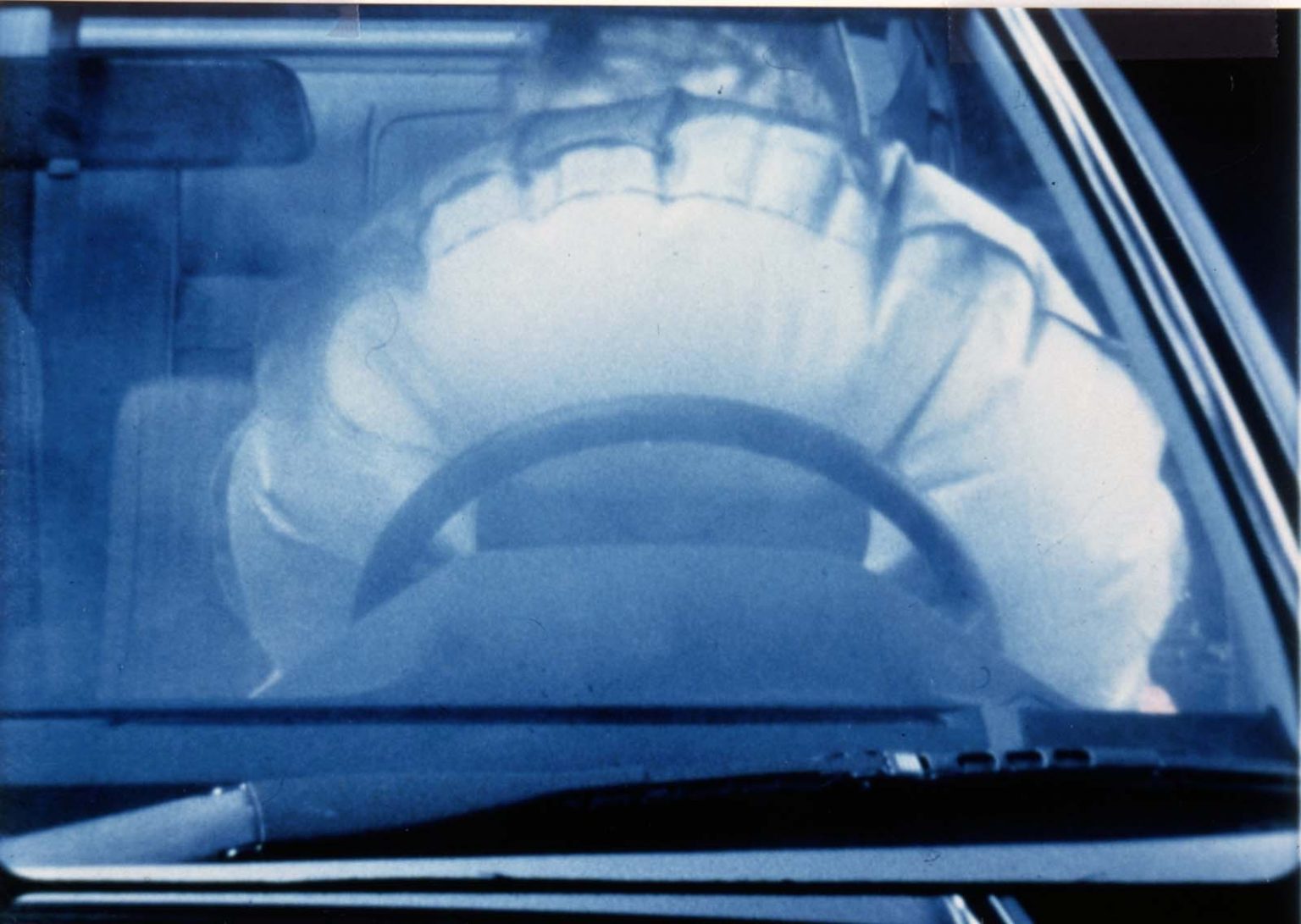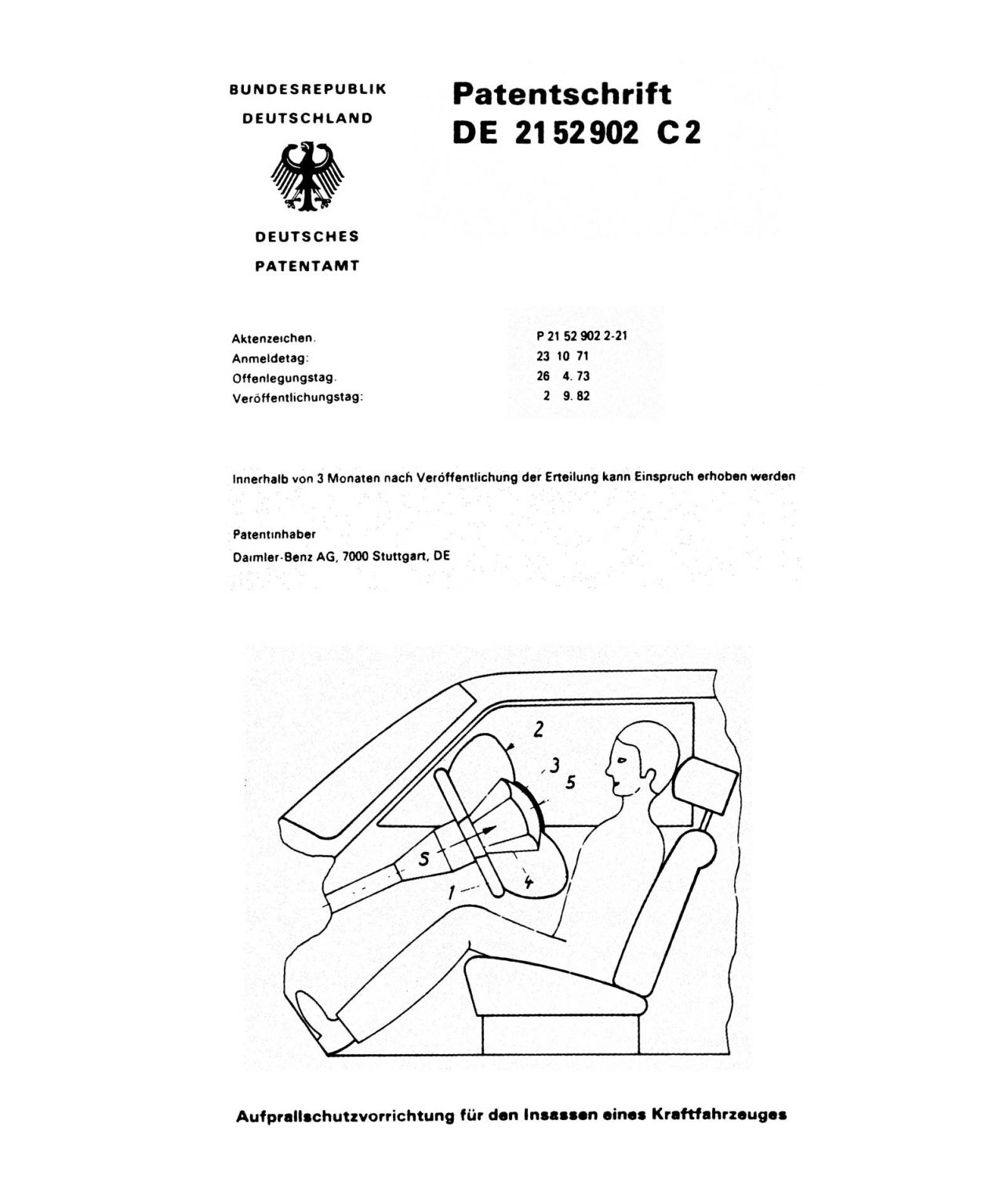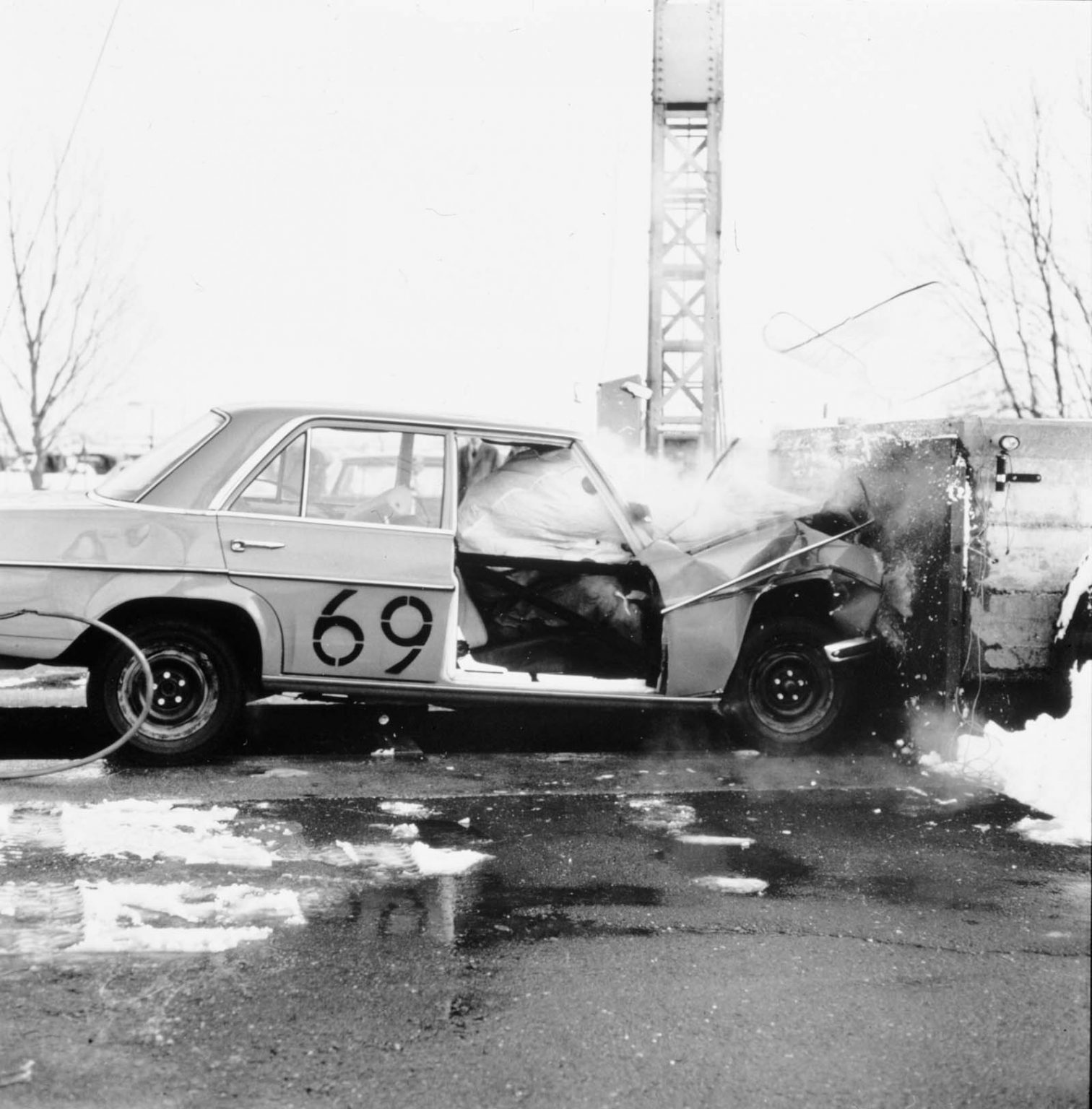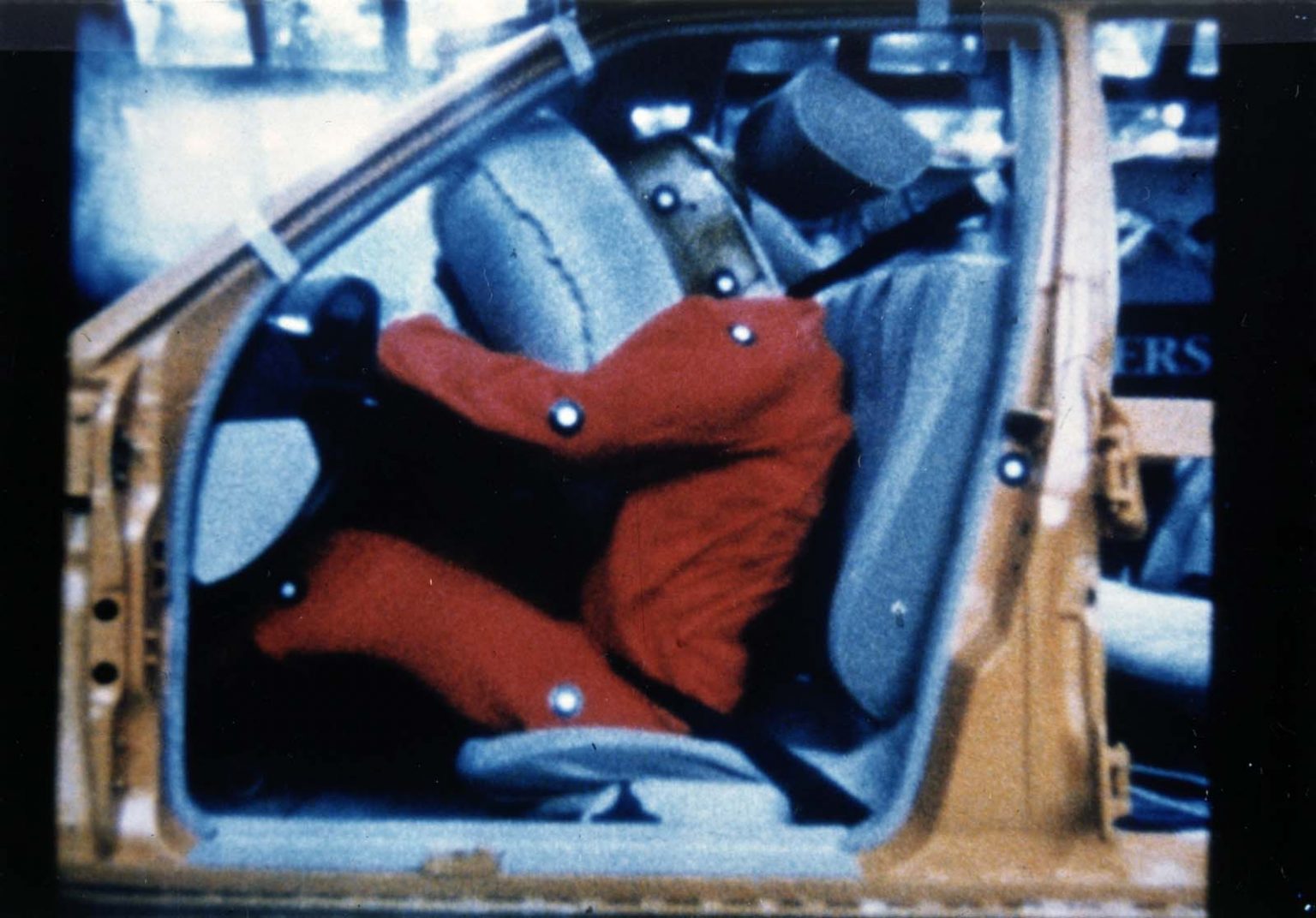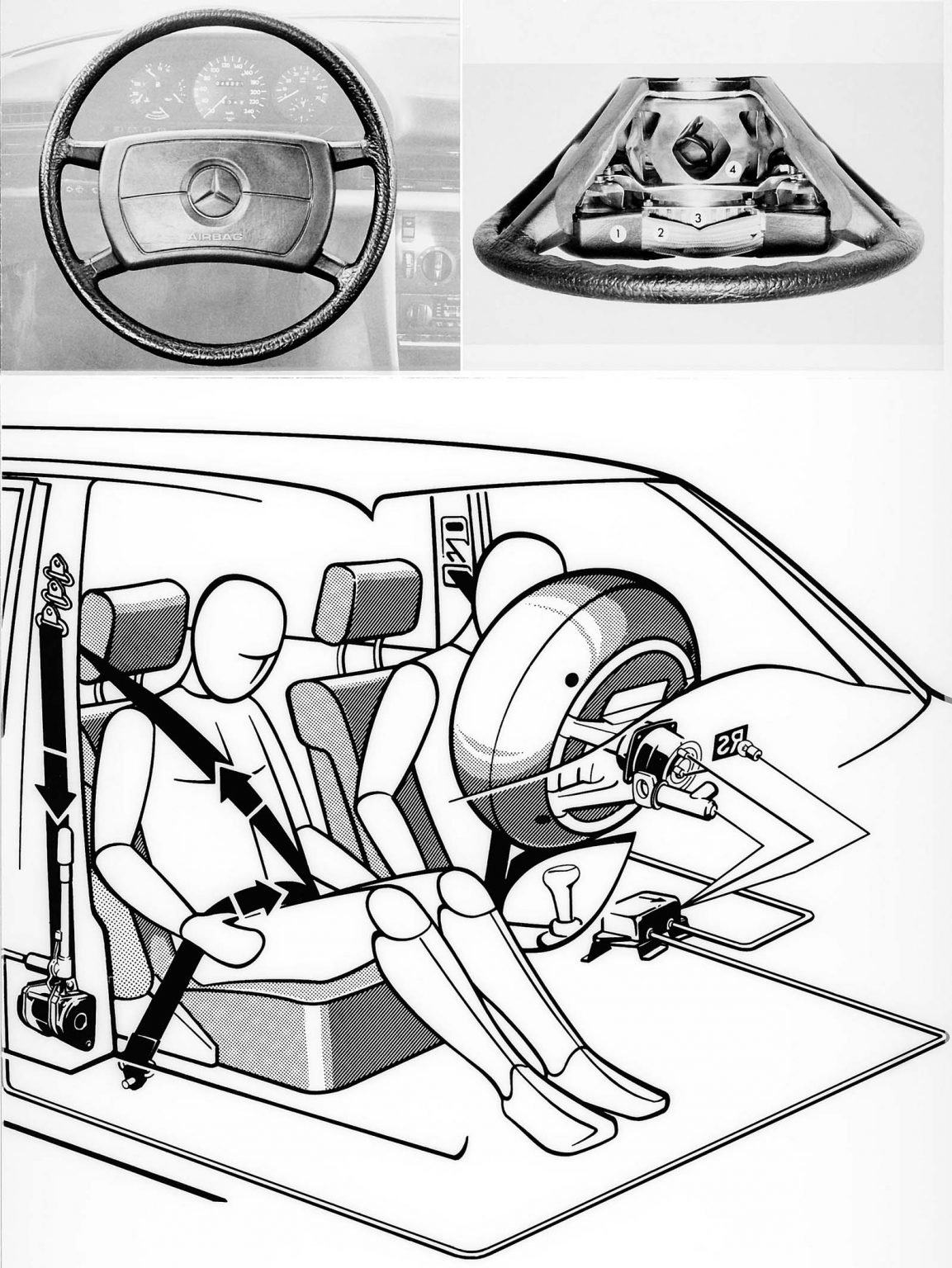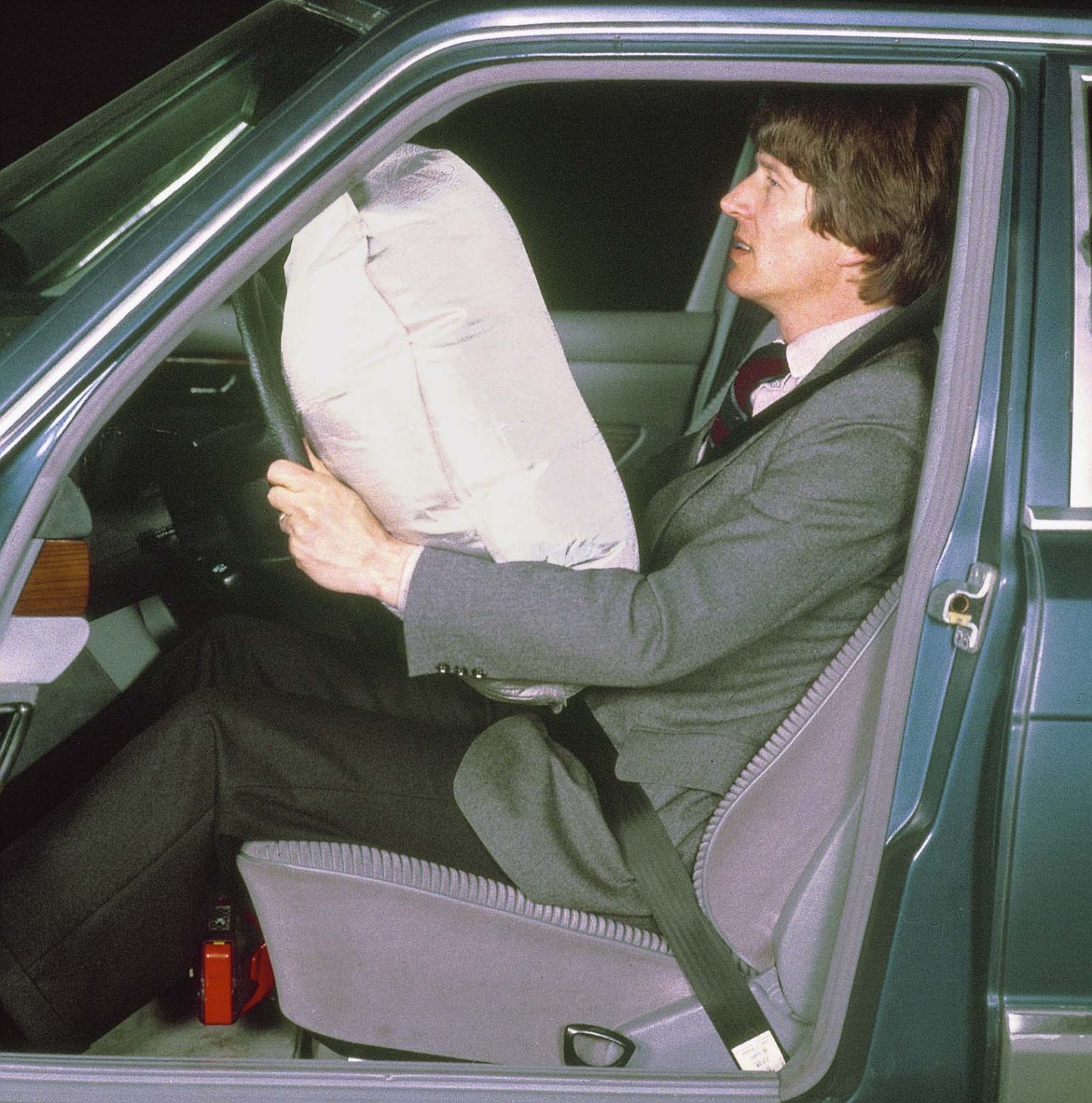
Over 40 years ago Mercedes Benz introduced the driver airbag in series production. From the end of 1980 for the W126 S-Class, the airbag became an optional extra and was delivered to the first customers in 1981. Developed jointly with Bosch, this was the start of what has now become a standard product.
But it wasn’t just an airbag, you see Mercedes had coupled it with a seatbelt tensioner. Previewed back in December 1980 it went into production in the following January. The W126 that was the first car to have the new technology, setting another passive safety milestone.
The World premier was at the Amsterdam international Motor Show in February 1981. Then one month later at the Geneva Motor Show. Available for the S-Class and SEC Coupés as an option and costing DM 1,525.50.
In the first two months more than 100 of the S-Class vehicles were fitted with one. This new safety system was very quickly adopted by other manufacturers across the world.
As soon as 1982 Mercedes were able to offer this across the whole model range and from 1992 it was a standard fitment. By 1994 a passenger airbag was also standard equipment. Since then, airbags have been appearing all over the cabin, turning the average car interior into a bouncy castle in the event of an accident. But they work.
An airbag is deployed with a propellant within only milliseconds in front of the vehicle occupants. Sensors in the vehicle detect strong deceleration. So, the sudden braking in a severe head-on collision triggers the firing of a propellant charge. This propellant mixture was mainly nitrogen at the start. It inflated a cushion shaped fabric bag. Combined with a seat belt it offers the best possible protection. Both airbag and seatbelt tensioner combined work to gently cushion the upper body when thrown forward by the impact.
